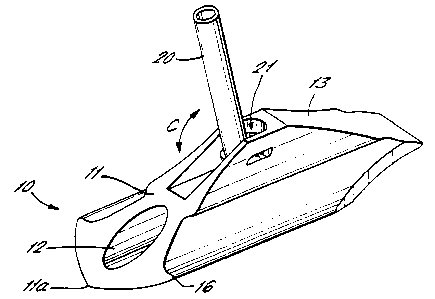Some of the information on this Web page has been provided by external sources. The Government of Canada is not responsible for the accuracy, reliability or currency of the information supplied by external sources. Users wishing to rely upon this information should consult directly with the source of the information. Content provided by external sources is not subject to official languages, privacy and accessibility requirements.
Any discrepancies in the text and image of the Claims and Abstract are due to differing posting times. Text of the Claims and Abstract are posted:
| (12) Patent: | (11) CA 2175673 |
|---|---|
| (54) English Title: | IMPROVEMENTS IN GROUND ANCHORS |
| (54) French Title: | AMELIORATIONS APPORTEES A DES TIRANTS D'ANCRAGE |
| Status: | Term Expired - Post Grant Beyond Limit |
| (51) International Patent Classification (IPC): |
|
|---|---|
| (72) Inventors : |
|
| (73) Owners : |
|
| (71) Applicants : |
|
| (74) Agent: | RICHES, MCKENZIE & HERBERT LLP |
| (74) Associate agent: | |
| (45) Issued: | 2004-12-07 |
| (86) PCT Filing Date: | 1994-05-18 |
| (87) Open to Public Inspection: | 1995-05-11 |
| Examination requested: | 2000-04-03 |
| Availability of licence: | N/A |
| Dedicated to the Public: | N/A |
| (25) Language of filing: | English |
| Patent Cooperation Treaty (PCT): | Yes |
|---|---|
| (86) PCT Filing Number: | PCT/GB1994/001066 |
| (87) International Publication Number: | WO 1995012713 |
| (85) National Entry: | 1996-05-02 |
| (30) Application Priority Data: | ||||||
|---|---|---|---|---|---|---|
|
The invention relates to ground anchors (10) of the type which are attached to cables and rods and driven into the ground and tilted
transversely by tensioning the cable. A ground anchor comprising a body portion (11) having a generally triangular cross section extending
substantially along its length having generally concave sides and a continuous convex lower surface from one edge of the body portion
where the sides and lower suface meet to an opposite edge.
L'invention se rapporte à des tirants d'ancrage (10) du type de ceux qui sont fixés à des câbles et à des barres, enfoncés dans le sol puis basculés transversalement par tension du câble. Un tirant d'ancrage comprend un corps (11) généralement de coupe triangulaire, s'étendant sensiblement sur sa longueur, doté de côtés généralement concaves ainsi que d'une surface inférieure continue convexe s'étendant à partir d'un bord de la portion du corps où se rencontrent les côtés et la surface inférieure, jusqu'au bord opposé.
Note: Claims are shown in the official language in which they were submitted.
Note: Descriptions are shown in the official language in which they were submitted.

2024-08-01:As part of the Next Generation Patents (NGP) transition, the Canadian Patents Database (CPD) now contains a more detailed Event History, which replicates the Event Log of our new back-office solution.
Please note that "Inactive:" events refers to events no longer in use in our new back-office solution.
For a clearer understanding of the status of the application/patent presented on this page, the site Disclaimer , as well as the definitions for Patent , Event History , Maintenance Fee and Payment History should be consulted.
| Description | Date |
|---|---|
| Inactive: Expired (new Act pat) | 2014-05-18 |
| Inactive: IPC from MCD | 2006-03-12 |
| Inactive: IPC from MCD | 2006-03-12 |
| Inactive: IPC from MCD | 2006-03-12 |
| Grant by Issuance | 2004-12-07 |
| Inactive: Cover page published | 2004-12-06 |
| Pre-grant | 2004-09-22 |
| Inactive: Final fee received | 2004-09-22 |
| Notice of Allowance is Issued | 2004-08-04 |
| Letter Sent | 2004-08-04 |
| Notice of Allowance is Issued | 2004-08-04 |
| Inactive: Approved for allowance (AFA) | 2004-07-15 |
| Amendment Received - Voluntary Amendment | 2003-11-25 |
| Inactive: S.30(2) Rules - Examiner requisition | 2003-10-07 |
| Amendment Received - Voluntary Amendment | 2003-06-06 |
| Inactive: S.30(2) Rules - Examiner requisition | 2002-12-06 |
| Amendment Received - Voluntary Amendment | 2000-06-27 |
| Amendment Received - Voluntary Amendment | 2000-05-09 |
| Inactive: Application prosecuted on TS as of Log entry date | 2000-05-03 |
| Letter Sent | 2000-05-03 |
| Inactive: Status info is complete as of Log entry date | 2000-05-03 |
| Request for Examination Requirements Determined Compliant | 2000-04-03 |
| All Requirements for Examination Determined Compliant | 2000-04-03 |
| Letter Sent | 1999-11-08 |
| Reinstatement Requirements Deemed Compliant for All Abandonment Reasons | 1999-10-28 |
| Deemed Abandoned - Failure to Respond to Maintenance Fee Notice | 1999-05-18 |
| Application Published (Open to Public Inspection) | 1995-05-11 |
| Abandonment Date | Reason | Reinstatement Date |
|---|---|---|
| 1999-05-18 |
The last payment was received on
Note : If the full payment has not been received on or before the date indicated, a further fee may be required which may be one of the following
Please refer to the CIPO Patent Fees web page to see all current fee amounts.
Note: Records showing the ownership history in alphabetical order.
| Current Owners on Record |
|---|
| PLATIPUS ANCHORS LIMITED |
| Past Owners on Record |
|---|
| CHARLES SIMON JAMES AGG |